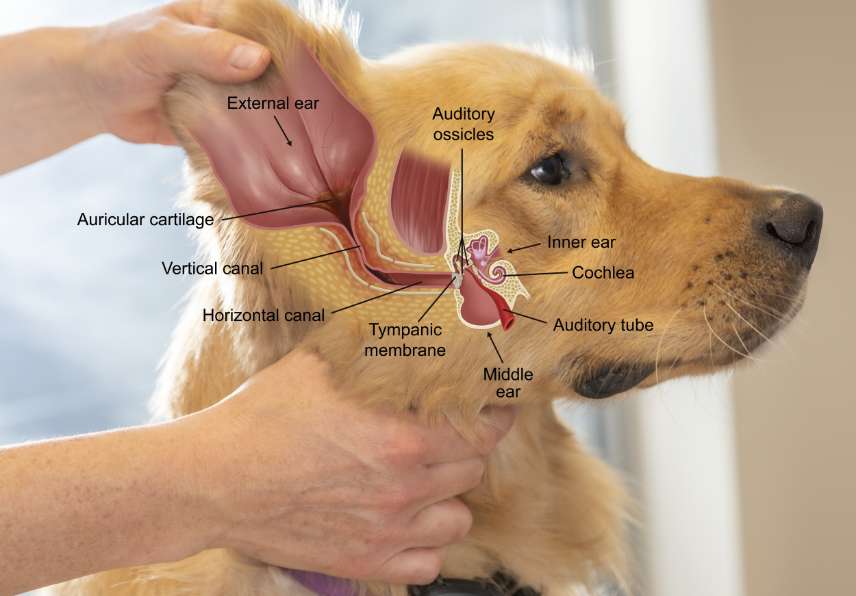
What to Know About Otitis Externa
Otitis externa is a common ear condition that can be quite painful for dogs.
The condition can reoccur if not treated properly.
What Is Otitis Externa?
Otitis externa is a common ear condition involving inflammation of the external ear canal. The condition often appears to develop suddenly and can be quite painful for dogs. If your dog has otitis externa, either one or both ears may be affected to a varying extent.1,2
How can you tell if your dog may have otitis externa?
Common signs to watch for include:
- Rubbing or scratching of the ears
- Head shaking
- Pain or discomfort
- An unpleasant odour or discharge from the ears

If you notice any of these signs, it is important to schedule an appointment with your vet right away.
The inflammation caused by otitis externa changes the environment of your dog’s ear canal, causing resident bacteria and yeast inside the ear to multiply. Left untreated, your dog’s ear condition may worsen and could even lead to long-term hearing problems.


Otitis externa affects up to
1 in 7 dogs
seen in veterinary practice
How Common Is Otitis Externa?
Otitis externa is very common. Up to 1 in 7 dogs seen in veterinary practice will get otitis externa at some point in their lives.3,4 Otitis externa can also recur—1 in 4 dogs with otitis externa will get it again at least once.3
There are many reasons why your dog may have otitis externa.
The most common cause is allergies to something in the environment or, less often, to food.5,6
Other causes include:
- Parasites
- Foreign bodies in ear canal
- Skin disorders
- Other diseases
- Activities like swimming which introduce water into ears
Some breeds, particularly dogs with long or floppy ears, appear to be more likely to develop otitis externa
How Should I Care for My Dog’s Ears?
It is important to identify any underlying factors that led to your dog’s condition and treat them properly. Without identifying the underlying cause, treatment may provide only temporary relief, and your dog’s otitis externa could recur.
After your dog has been treated for otitis externa, you should start seeing signs that your dog’s ear condition is improving, such as less redness, scratching, pain or discharge. Be sure to schedule a follow-up appointment after treatment so your veterinary practitioner can see how your dog is doing.
The best way to prevent your dog from getting otitis externa again is to work with your vet to maintain your dog’s ear and skin health.
Start by keeping up with regular wellness visits. Be sure to keep your dog’s ears clean and to thoroughly dry them after a bath or swimming.

Treating Your Dog’s Otitis Externa
Ask your vet about the right otitis externa treatment option for your dog.
References: 1. Kasai T, Fukui Y, Aoki K, et al. J Appl Microbiol. 2020;130:1084-1091. 2. Borriello G, Paradiso R, Catozzi C, et al. PLoS One. 2020;15:e0241447. 3. Perry LR, MacLennan B, Korven R, et al. Can Vet J. 2017;58:168-174. 4. O’Neill DG, Church DB, McGreevy PD, et al. PLoS One. 2014;9:e90501. 5. Hnilica KA. In: Small Animal Dermatology: A Color Atlas and Therapeutic Guide. 4th ed. Elsevier; 2017:416-430. 6. Zur G, Lifshitz B, Bdolah-Abram T. J Small Anim Pract. 2011;52:254-258.
